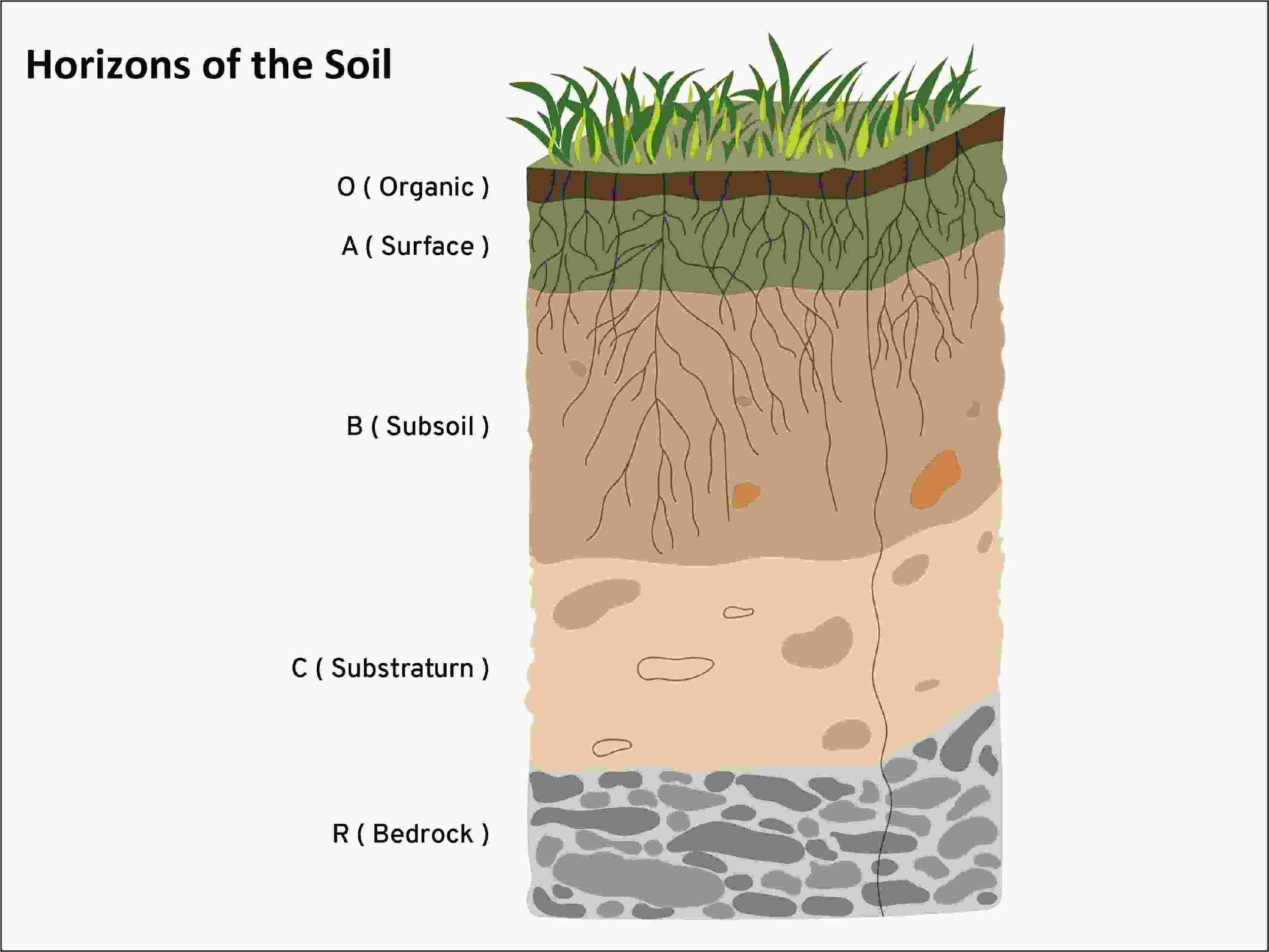
Which of the following layers of soil is called a zone of leaching?
A. $A0$
B. $A00$
C. $A2$
D. $A1$
Answer
463.5k+ views
Hint: A soil profile is the vertical division of the soil displaying the several layers from the surface to the unaffected parent material. A soil profile includes O, A, B, C, and R master horizons, and master horizons are divided into sub-horizons. The O horizon is divided into $O1$and $O2$. A horizon is classified into $A1$, $A2$and $A3$. B horizon is categorized into $B1$, $B2$, and $B3$. A, B, and C represent the main horizons.
Complete answer:

Fig: Soil Profile - Horizons
The zone of leaching is the area present beneath the topsoil. Within this region, the nutrient elements are dissolved and transported downward via the soil, until the zone of saturation is attained. Leaching is a process, where soluble nutrients are lost from the soil. The horizon of the soil is the surface layer, containing more minerals. It is soft and porous, which holds enough water and air.
Option C $A2$: It is the horizon of maximum eluviation of iron, clay, organic matter, and aluminium oxides. Loss of these materials results in the accumulation of quartz and silt size resistant materials. It is constantly leached by rain water, which is also called surface soil.
Therefore Option C is the correct answer.
Additional Information:
Option A $A0$: This sub-horizon is not present in A horizon.
Hence, Option A is not correct
Option B $A00$: This sub-horizon is not included in A horizon.
So, Option B is not correct
Option D $A1$: It is the top most mineral horizon, formed adjacent to the surface of the soil. There is an accumulation of humified organic matter and mineral fraction, appearing darker in color.
Option D is not correct
Note:
The soil profile bears the historic record of soil-forming processes, thus forming the basis for the study in pedagogical examinations. The soil profile acts as a clue for the classification of soils, forming the basis for the practical utility of seeds. The various layers of the soil are termed horizons. The soil gets leached out of A horizon and accumulates in B horizon, as it is called the zone of accumulation.
Complete answer:

Fig: Soil Profile - Horizons
The zone of leaching is the area present beneath the topsoil. Within this region, the nutrient elements are dissolved and transported downward via the soil, until the zone of saturation is attained. Leaching is a process, where soluble nutrients are lost from the soil. The horizon of the soil is the surface layer, containing more minerals. It is soft and porous, which holds enough water and air.
Option C $A2$: It is the horizon of maximum eluviation of iron, clay, organic matter, and aluminium oxides. Loss of these materials results in the accumulation of quartz and silt size resistant materials. It is constantly leached by rain water, which is also called surface soil.
Therefore Option C is the correct answer.
Additional Information:
Option A $A0$: This sub-horizon is not present in A horizon.
Hence, Option A is not correct
Option B $A00$: This sub-horizon is not included in A horizon.
So, Option B is not correct
Option D $A1$: It is the top most mineral horizon, formed adjacent to the surface of the soil. There is an accumulation of humified organic matter and mineral fraction, appearing darker in color.
Option D is not correct
Note:
The soil profile bears the historic record of soil-forming processes, thus forming the basis for the study in pedagogical examinations. The soil profile acts as a clue for the classification of soils, forming the basis for the practical utility of seeds. The various layers of the soil are termed horizons. The soil gets leached out of A horizon and accumulates in B horizon, as it is called the zone of accumulation.
Recently Updated Pages
Master Class 12 Business Studies: Engaging Questions & Answers for Success

Master Class 12 Economics: Engaging Questions & Answers for Success

Master Class 12 English: Engaging Questions & Answers for Success

Master Class 12 Maths: Engaging Questions & Answers for Success

Master Class 12 Social Science: Engaging Questions & Answers for Success

Master Class 12 Chemistry: Engaging Questions & Answers for Success

Trending doubts
Who was the first woman to receive Bharat Ratna?

Write a letter to the principal requesting him to grant class 10 english CBSE

Why is there a time difference of about 5 hours between class 10 social science CBSE

What is the median of the first 10 natural numbers class 10 maths CBSE

The Equation xxx + 2 is Satisfied when x is Equal to Class 10 Maths

Discuss the main reasons for poverty in India




